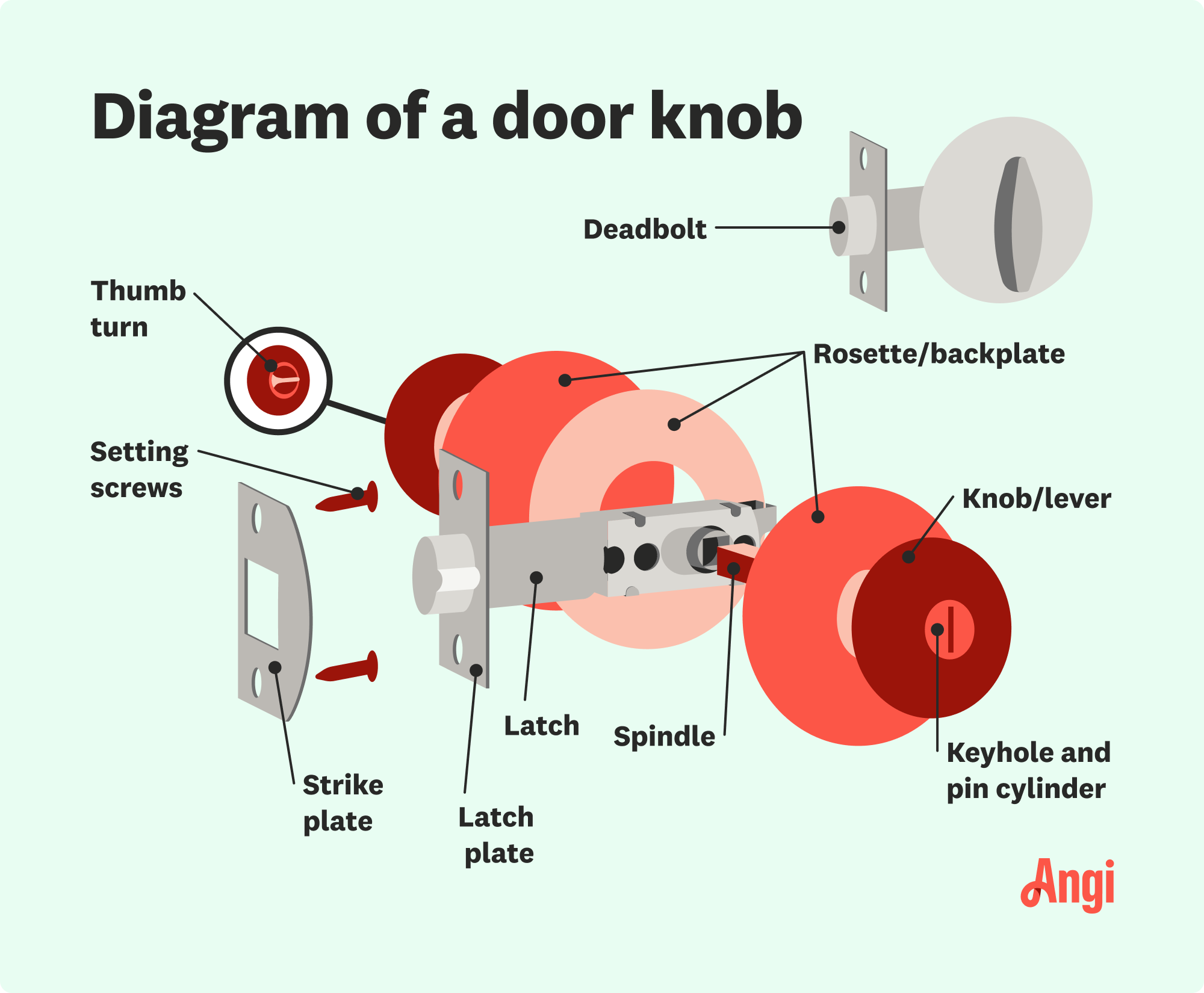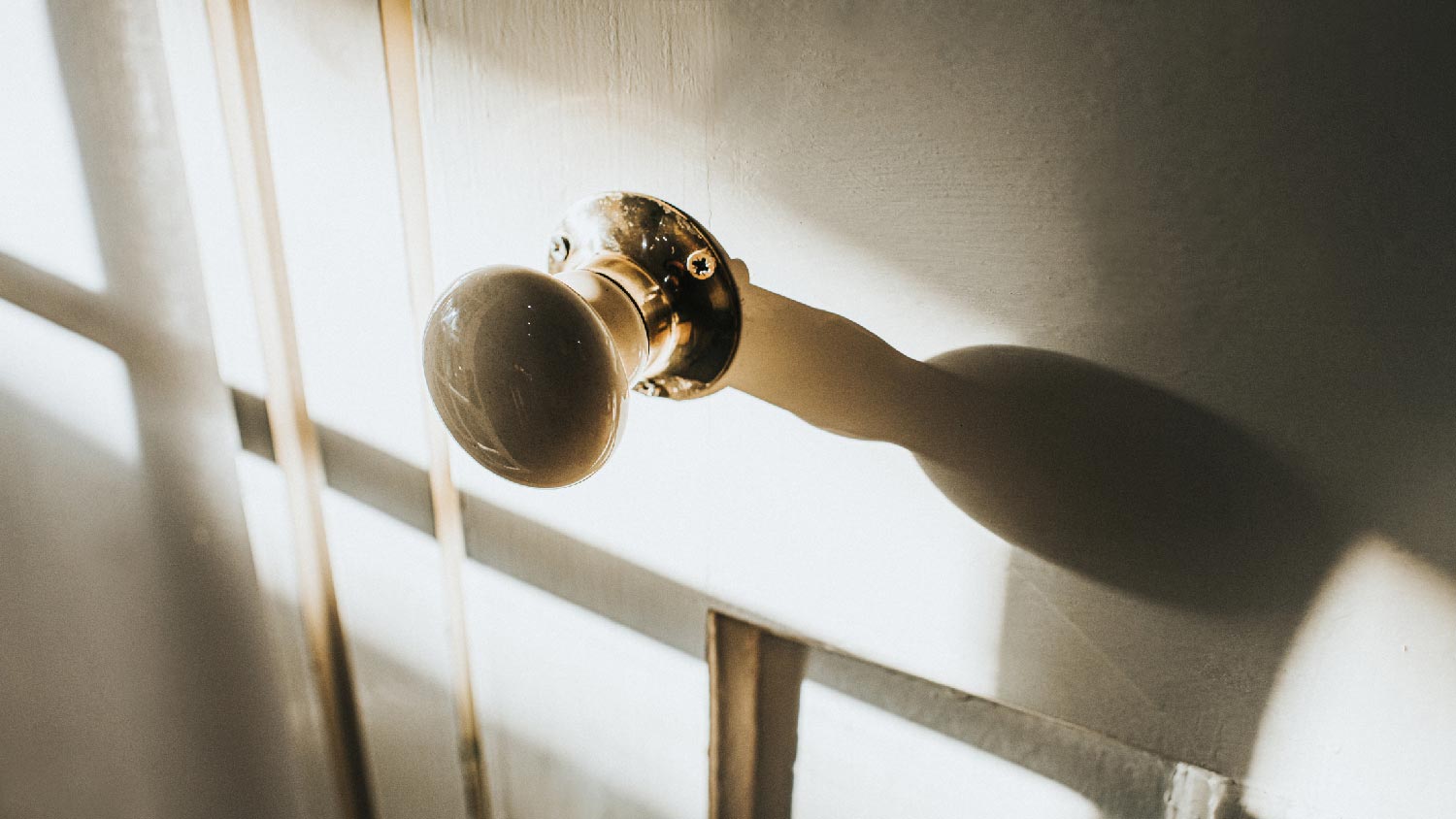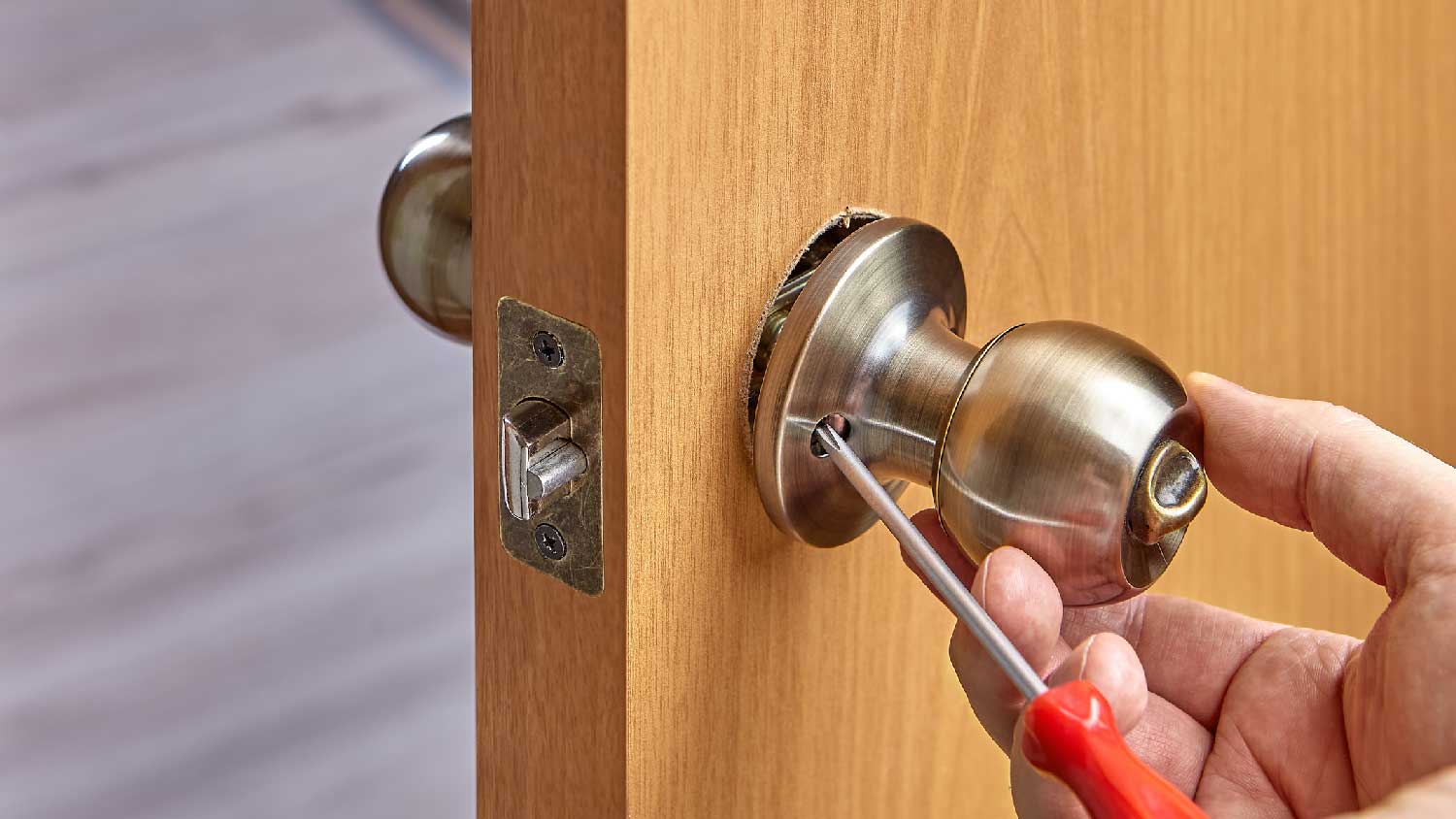
There’s nothing better than a dog door to give your pet free access to the outdoors. Use this dog door installation cost guide to see what it will cost you.
When it comes to doorknobs, every component is key


Every part of a doorknob is crucial to its function and security.
Maintenance includes tightening loose components and replacing worn ones.
Hire a door repair pro to replace broken doorknobs and ensure your doors remain safe.
Doorknobs may seem small and unassuming, but inside, they’re a complex array of parts that work together to secure your home. You may already be familiar with common parts even though you don’t know them by name. Knowing different doorknob parts and how they each work can help you with doorknob maintenance, repair, and replacement.

Every part of a doorknob is essential to its proper functionality. Though doorknobs can differ greatly in design, most consist of some form of the same basic components.
The most obvious component of a doorknob is the knob itself. The traditional doorknob design is round and twists clockwise. Some doors feature a lever instead, on which you simply pull down to open the door.
Many homeowners choose to switch out knobs when remodeling to achieve a specific look with different finishes and types of metal, wood, stone, porcelain, or even glass. Though knobs and levers vary in design and material, they all serve the same purpose as the main interface between you and the door's inner latches and locks.
Some doorknobs, especially for exterior doors, have a key-operated lock mechanism. When the proper key is inserted into the keyhole, it enters the pin cylinder. These pins vary in length and correspond to a specific pattern of grooves on a corresponding key. Match the groves to the pin lengths, and they'll move into position to lock or unlock the door.

Also visible behind the knob itself is a plate that can go by several names. A circular plate is called a rosette or rose, while a rectangular one is a backplate or trim plate. This component has several functions:
Covers the hole in the door where the spindle connects the knobs on either side
Protects the door from damage
Stabilizes the knob
Provides a clean look
Rosettes and backplates mount directly into the door with screws and can be removed as needed to inspect other doorknob components. The exception is with exterior doorknobs, which aren't as easily disassembled from the outside.
The spindle is a metal rod that runs through the door and the center of the knob mechanism. It connects both knobs to the latch, the dead bolt, and each other. The spindle rotates as you turn the knob, retracting the latch and opening the door.
A worn or damaged spindle can prevent every other component from working properly. If your spindle needs to be replaced, it costs $5 to $25 on average.
All doors have some type of door latch that protrudes from the side of the door into a hole in the doorframe. While engaged, the latch keeps the door from swinging open. When you turn the doorknob or lever, the latch retracts and lets the door swing freely.
Exterior doors may have an additional type of door lock called a dead bolt. Like a latch, the dead bolt protrudes out of the side of the door into the wall. Unlike the latch, it can only be moved by turning a key or thumb-turn switch. Dead bolts are resistant to lock picking and provide an additional layer of security.
Another feature of exterior doors is a deadlatch plunger, a smaller bolt behind the main latch. Like the latch, it is retracted by turning the knob. However, when properly engaged, it can't be manipulated by credit cards or other thin objects commonly used by would-be intruders. Instead, deadlatch plungers require a key to open.
Deadlatch plungers are ineffective when out of alignment with the strike plate. If you hear two clicks when you close your door, your deadlatch plunger is out of alignment.
The strike plate is a metal plate attached to the doorframe with openings for the latch and dead bolt to slide into when the door is closed securely. It tends to have a curved edge that gently guides the latch into position.
The strike plate protects the doorframe from wear and withstands the force of the other mechanical components. A metal plate in the door also adds another layer of protection from intruders. It may seem like a passive piece, but the strike plate is integral to the function and security of a doorknob. A replacement strike plate costs less than $20.
These tiny screws are found on the interior side of the door. They hold the knob or lever together with the spindle to ensure everything stays in place and functions properly. Loose setting screws can prevent a knob from having enough force to turn the spindle. If your knob is loose or wobbly, simply tighten the setting screws with a screwdriver.
If your door has a dead bolt or other locking mechanism separate from the main latch, it will often have a thumb turn to operate it. Turning the thumb turn retracts or extends the dead bolt to unlock or lock the door without a key. You'll only find a thumb turn on the interior side, though it may have its own pin cylinder on the exterior.
The shank is the stem of the inner part of the doorknob. It has a hole for the spindle that connects the knobs to each other and the latch. It’s responsible for connecting the knob and the door as it transfers the knob’s rotation to the spindle and latching mechanism.

Incorporate doorknob care into your home maintenance routine to keep your doors functioning safely and properly. Follow these tips:
Tighten screws regularly, especially on wobbly or loose doorknobs.
Clean and polish doorknobs to remove dirt and grime buildup.
Lubricate door handles every six months to keep small components in good shape.
Lubricate exterior knobs just before winter starts and freezing temperatures set in.
Install galvanized metal hardware outdoors to protect it from the elements.
To lubricate a doorknob, spray the inside of the locking mechanism with a dry graphite spray designed for door locks. These products have a thin straw applicator that prevents spillage and penetrates the hardware.
Whether you should attempt doorknob repair or replacement on your own depends on the extent of the problem and whether you have the necessary tools and skills.
For example, tightening the screws on loose knobs is a simple DIY task that any homeowner can handle. However, replacing locks is more complex, and mistakes can lead to even higher material costs down the line.
Hiring a reputable local door repair company will save you time, maintain your home insurance coverage, and provide you with a warranty. When it comes to the cost of professional door repairs, expect to pay $30 to $50 per doorknob.
From average costs to expert advice, get all the answers you need to get your job done.

There’s nothing better than a dog door to give your pet free access to the outdoors. Use this dog door installation cost guide to see what it will cost you.

Whether you’re installing a new door or replacing an existing one, the cost of door installation varies based on location, door type, framing needs, and other factors.

When adding a fresh new entryway to your home, you may be curious about the cost of sliding glass doors. Let's break it down by size, style, and design.

Discover the window-to-door conversion cost. Learn about average prices, cost factors, and tips to save on your window-to-door conversion project.

Slab and pre-hung doors are both excellent interior door choices. This guide compares the two based on essential factors in the decision-making process.

Looking to replace interior doors yourself? Use this guide to get the job done quickly, and without spending a fortune on tools.